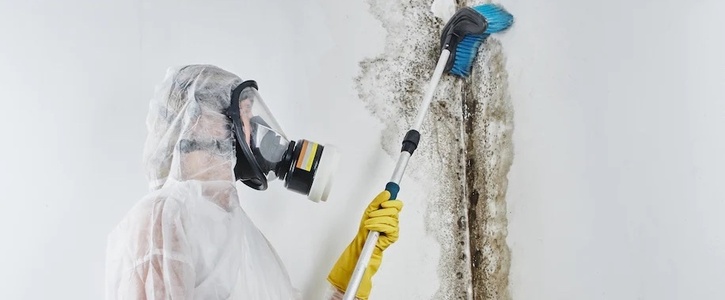1,000 signatures reached
To: Senator Sherrod Brown and Representative Marcy Kaptur
Congress: Mold and Water-Damaged Buildings Are Affecting Our Public Health

Senator Brown and Representative Kaptur,
I’m writing to you today to bring awareness, and urgently required attention, to a public health hazard that has affected myself, my family, and countless others throughout the United States. In short, I'm speaking about the toxic effects from indoor mold and microbial growth within damp and water-damaged buildings.
In 2004 the Center for Disease Control and Prevention (CDC) convened with the Institute of Medicine's Committee on Damp Indoor Spaces and Health to give recommendations concerning this issue. The committee recommended that the CDC conduct additional research and studies to address the many outstanding concerns from medical professionals, scientists and the public-at-large on the adverse health effects from indoor mold exposure and associative toxins in damp and water damaged buildings. In the report the committee stated, "Greater research attention to the possible role of damp indoor environments and the agents associated with them in less well understood disease entities is needed to address gaps in scientific knowledge and concerns among the public." The committee concluded that, "excessive indoor dampness is a public-health problem."
Senator Brown and Representative Kaptur, I urge you to bring forth federal legislation similar to Ohio H.B. 251, The Ohio Indoor Safe Air Act, which will establish an indoor mold program to take action on this unaddressed issue that is affecting so many Americans and people throughout the world. Mold and microbial growth in damp and water-damaged buildings are an incredibly devastating, yet entirely preventable, public health hazard.
It's time to start the conversation about the potential options for reform which would aid in addressing this issue. Thank you for your time and consideration.
I’m writing to you today to bring awareness, and urgently required attention, to a public health hazard that has affected myself, my family, and countless others throughout the United States. In short, I'm speaking about the toxic effects from indoor mold and microbial growth within damp and water-damaged buildings.
In 2004 the Center for Disease Control and Prevention (CDC) convened with the Institute of Medicine's Committee on Damp Indoor Spaces and Health to give recommendations concerning this issue. The committee recommended that the CDC conduct additional research and studies to address the many outstanding concerns from medical professionals, scientists and the public-at-large on the adverse health effects from indoor mold exposure and associative toxins in damp and water damaged buildings. In the report the committee stated, "Greater research attention to the possible role of damp indoor environments and the agents associated with them in less well understood disease entities is needed to address gaps in scientific knowledge and concerns among the public." The committee concluded that, "excessive indoor dampness is a public-health problem."
Senator Brown and Representative Kaptur, I urge you to bring forth federal legislation similar to Ohio H.B. 251, The Ohio Indoor Safe Air Act, which will establish an indoor mold program to take action on this unaddressed issue that is affecting so many Americans and people throughout the world. Mold and microbial growth in damp and water-damaged buildings are an incredibly devastating, yet entirely preventable, public health hazard.
It's time to start the conversation about the potential options for reform which would aid in addressing this issue. Thank you for your time and consideration.
Why is this important?
It's estimated that 47% of ALL U.S. homes have visible dampness and mold. People spend 90% of their time indoors, yet a lack of emphasis is put on indoor air quality and how that affects our health every day.
The recent peer-reviewed medical journal “A Comprehensive Review of Mold Research Literature From 2011 – 2018” published in Internal Medicine Review concluded that 112 of 114 (98.2%) of epidemiological articles published between 2011 and 2018 supported the proposition that inhaled mold, mold fragments, toxins and various pathogenic inflammagen, or other components of the air in water-damaged buildings (WDB), cause single and multi-system illness in humans. Symptoms include chronic and daily manifestations of fatigue, pain, nonrestorative sleep, cognitive deficits, neuropathic pains, gastrointestinal issues, musculoskeletal compromise, post-exertional malaise, dermatological, ophthalmic, endocrine, and other chronic multisystem symptoms for those suffering. These studies included 273,000 subjects from over 30 countries and 5 continents!
The time for adequate funding for research and awareness on this overlooked public health issue is long overdue.
The recent peer-reviewed medical journal “A Comprehensive Review of Mold Research Literature From 2011 – 2018” published in Internal Medicine Review concluded that 112 of 114 (98.2%) of epidemiological articles published between 2011 and 2018 supported the proposition that inhaled mold, mold fragments, toxins and various pathogenic inflammagen, or other components of the air in water-damaged buildings (WDB), cause single and multi-system illness in humans. Symptoms include chronic and daily manifestations of fatigue, pain, nonrestorative sleep, cognitive deficits, neuropathic pains, gastrointestinal issues, musculoskeletal compromise, post-exertional malaise, dermatological, ophthalmic, endocrine, and other chronic multisystem symptoms for those suffering. These studies included 273,000 subjects from over 30 countries and 5 continents!
The time for adequate funding for research and awareness on this overlooked public health issue is long overdue.
How it will be delivered
Delivered in person or formal email
